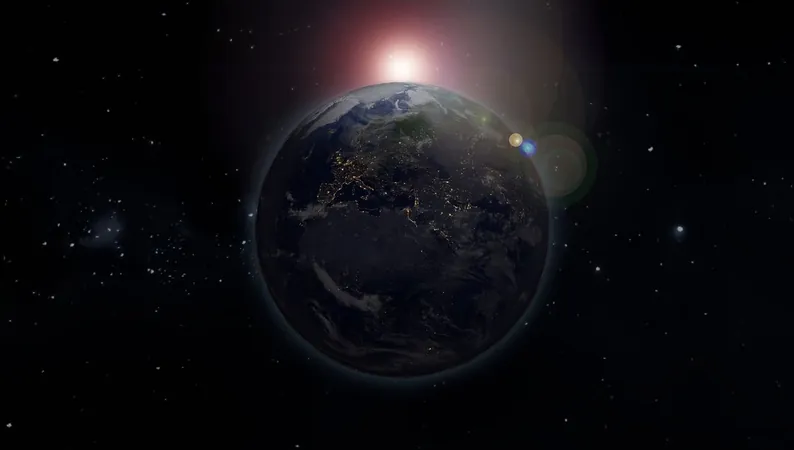
Why July 3rd Marks Earth’s Furthest Journey from the Sun: A Mind-Blowing Cosmic Event!
2025-07-03
Author: Wai
Earth's Epic Distance from the Sun
On July 3rd, get ready for a cosmic milestone! Earth will reach a staggering distance of 152,087,738 kilometers (94,502,939 miles) from the Sun. While this may sound like we’re far away from our solar giant, it’s fascinating to note that just a few months ago, we were 5.1 million kilometers closer, receiving 6.8% more solar radiation during January. So, why are we basking in summer now, despite this distance?
The Science of Seasons Unveiled
It may come as a surprise, but the reasons behind our seasons have nothing to do with how close or far Earth is from the Sun. Instead, it all boils down to the tilt of our planet. Right now, the Northern Hemisphere is angled towards the Sun, leading to the warmth of summer, while the Southern Hemisphere is experiencing winter. Fast forward six months, and the roles reverse!
The Shifting Dates of Cosmic Events
Interestingly enough, the dates of aphelion (the farthest point from the Sun) and perihelion (the closest point) aren’t fixed. Over the years, these dates have slowly shifted, moving about one day every 58 years. In fact, during the late 19th century, New Year’s Day coincided with perihelion! Can you imagine celebrating the New Year while being closest to the Sun?
Earth's Orbit: A Dynamic Journey
Earth's orbit isn’t a static circle; it evolves over time due to the gravitational pull of towering giants like Jupiter and Saturn. This phenomenon, known as the Milankovitch cycles, takes hundreds of thousands of years, swinging between being more elliptical and nearly circular. Currently, our orbit is at its most circular, affecting the way we experience seasons. Fascinatingly, despite these changes in shape, the actual length of a year remains unchanged.
How Our Orbit Influences Seasonal Lengths
The unique shape of our orbit impacts the lengths of our seasons too! As Earth transitions through different quadrants, we find that the more circular our orbit, the more closely the lengths of the seasons align. Right now, summer in the Northern Hemisphere is 4.66 days longer than winter, while spring enjoys a 2.9-day advantage over autumn. Isn’t it incredible how interconnected our planet and its movements are with the rhythms of nature?



 Brasil (PT)
Brasil (PT)
 Canada (EN)
Canada (EN)
 Chile (ES)
Chile (ES)
 Česko (CS)
Česko (CS)
 대한민국 (KO)
대한민국 (KO)
 España (ES)
España (ES)
 France (FR)
France (FR)
 Hong Kong (EN)
Hong Kong (EN)
 Italia (IT)
Italia (IT)
 日本 (JA)
日本 (JA)
 Magyarország (HU)
Magyarország (HU)
 Norge (NO)
Norge (NO)
 Polska (PL)
Polska (PL)
 Schweiz (DE)
Schweiz (DE)
 Singapore (EN)
Singapore (EN)
 Sverige (SV)
Sverige (SV)
 Suomi (FI)
Suomi (FI)
 Türkiye (TR)
Türkiye (TR)
 الإمارات العربية المتحدة (AR)
الإمارات العربية المتحدة (AR)